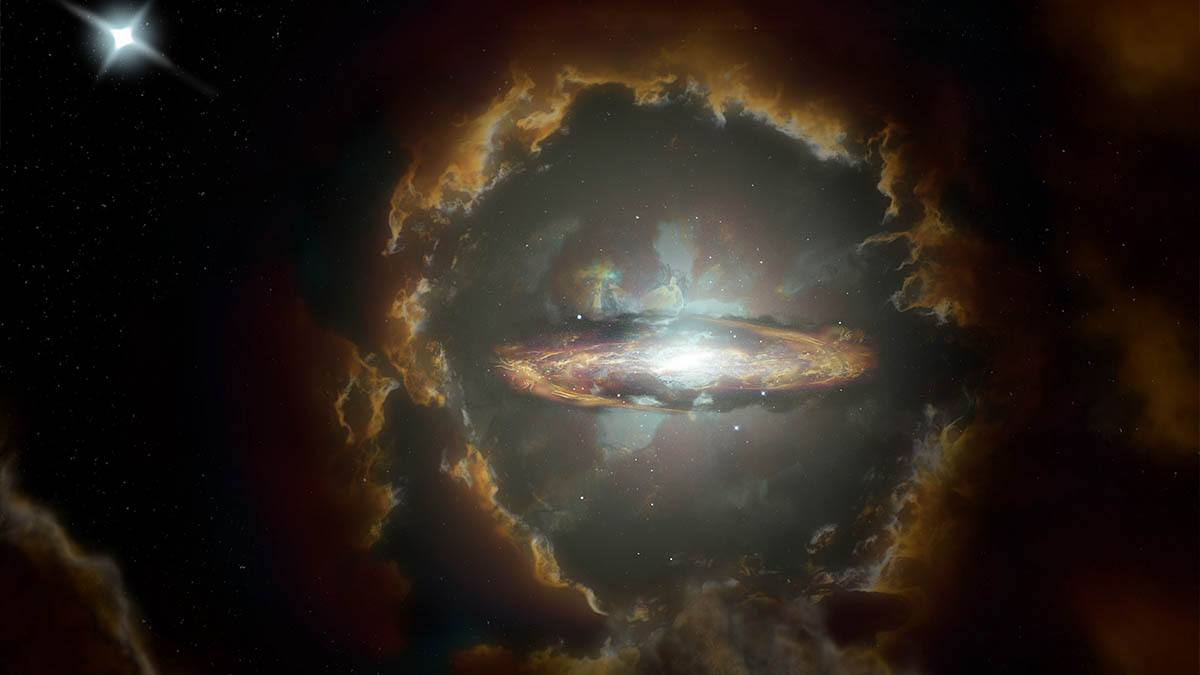Ancient Galaxy discovered by India’s Astrostat the first multi-frequency satellite of India

Researchers from the Inter-University Center for Astronomy and Astrophysics (IUCAA), Pune have found probably the soonest system known to man, arranged about 9.3 billion light-years from the Earth. The advancement disclosure, distributed on Monday, was made utilizing AstroSat—the first multi-frequency satellite of India.
Propelled by the Indian Space Research Organization (ISRO) on September 28, 2015, and created by different examination establishments from India and Canada, the satellite has some expertise in considering heavenly sources in X-beam, optical and UV ghostly groups all the while. It comprises of five payloads that help with catching UV light originating from divine items.
The satellite, utilizing its one of a kind highlights, as of late identified an outrageous bright light originating from the system named AUDFs01. The disclosure is relied upon to help our comprehension of the soonest wellspring of light known to mankind.
Considering UV radiation
The new world was found in the region of room called the Hubble eXtreme Deep Field by the wide-field UltraViolet Imaging Telescope (UVIT) of AstroSat. It is a little territory situated in the heavenly body Fornax, which was made utilizing the information gathered by the Hubble space telescope in 2003 and 2004. This part contains a great many cosmic systems.
The exploration group watched and inspected the UV light and its hotspot for over 28 hours in October 2016. In any case, it allegedly took almost two years for the analysts to affirm that the outflow was beginning from an early universe.
The UV radiation originating from inaccessible heavenly articles is difficult to record from Earth, as its majority is consumed by the planet’s air. Along these lines, researchers need to utilize telescopes in space to make such disclosures.
According to reports, NASA’s Hubble Space Telescope (HST), which is bigger than the UVIT, couldn’t recognize UV emanation from this system as the signs were excessively swoon. AstroSat figured out how to recognize it effectively since the foundation clamor in the UVIT finder is nearly lower than the HST.
The centrality of the revelation
The creators of the examination have noticed that the exploration is huge as far as upgrading our comprehension of the universe’s initial worlds that are discovered distinctly at outrageous UV frequencies. Contemplating the development of the early stars and worlds assists with understanding the conditions which prompted introductory beams of light or radiation after an extensive stretch of Cosmic Dark Age in the early universe post the Bing Bang.
Researchers accept that soon after the huge explosion, the universe arrived at its most noteworthy temperature and continuously started to cool. During this time, it comprised generally of subatomic particles like protons, neutrons, and photons. With time, these neutrons and protons consolidated to shape deuteron and helium, which pulled in electrons lastly melded to frame impartial hydrogen.
Hypothetically, at this very point, through the assistance of these old components, the main light shaped and was permitted to stream uninhibitedly every which way in space. Nonetheless, there were no stars, worlds or some other divine items for in excess of 200 million years after the Big Bang.
Inestimable Dark Age alludes to a short time when the universe was totally dim, and it in the long run reached a conclusion when the original of stars again began to frame. This further brought about the parting of particles in protons and electrons that prompted the reionisation of the universe. In any case, what handled brought about this reionisation stays a puzzle. What’s more, presently, UVIT distinguishing the extraordinary UV outflow offers an unforeseen expectation towards comprehending this riddle.
Recognizing outrageous radiation
The examination paper states, “One of the remarkable issues of current observational cosmology is to comprehend the idea of sources that created the heft of the ionizing radiation after the Cosmic Dark Age.” It further includes, “Direct recognition of these reionization sources is for all intents and purposes infeasible at high redshift because of the lofty decay of intergalactic medium transmission.”
The photons produced through such reionisation sources in the early universe are discouraged by light-blocking residue or carbon, or intergalactic medium. Consequently, with the current degree of information and innovation, it is difficult to watch such radiation from the Earth.
Luckily, some radiation arrives at our space telescopes and this has been concentrated through this exploration. According to reports, this is the first run through a cosmic system has been seen in the outrageous bright light and will additionally assist with revealing insight into the states of the early universe. The examination group was driven by Dr Kanak Saha, partner educator of cosmology at IUCAA, and comprises of worldwide analysts from Switzerland, France, USA, Japan, and the Netherlands.

